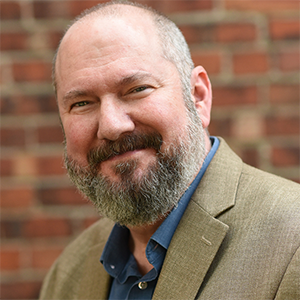SYRACUSE — Syracuse Habitat for Humanity wrapped up 2011 with a collaboration that offers home ownership to homeless veterans and kicks off the New Year by opening a new library for the community.
In December, Syracuse Habitat for Humanity announced its collaboration with the Syracuse VA Medical Center and the U.S. Department of Housing & Urban Development (HUD) that will create opportunities for homeless veterans to buy homes with Housing Choice Vouchers. This is the first time in New York State that HUD and Habitat for Humanity have collaborated this way. In the past, the vouchers could only be used for rental costs. The program is called Veteran’s Build.
“This is changing the way Habitat and HUD work together — by offering home-ownership opportunities to people who make little and don’t have the means to make more because they are disabled,” says Suzanne Williams, executive director of Syracuse Habitat for Humanity. “Almost doesn’t get better than that.”
(Sponsored)

Working Another Job While on FMLA Leave is Not Necessarily Misconduct
Imagine this. You have an employee who is on leave pursuant to the Family and Medical Leave Act (FMLA) and you discover that the employee is working for another employer.

Close the Skills Gap: Build Your Workforce with MACNY Registered Apprenticeship Program
In today’s competitive labor market, finding qualified candidates through traditional hiring methods has never been more challenging. As industries evolve and workforce demands shift, employers are facing a growing skills
Syracuse Habitat is the first in New York State to do a Veteran’s Build. The organization first announced its participation in Veteran’s Build on Veterans Day 2010, at the ground breaking — which Habitat called a ground blessing — of the sites where the two houses will be built on Fitch Street, on Syracuse’s Westside. However, these projects are currently on hold due to the lack of funds. As of December 2011, about $43,000 was needed for materials to complete the houses.
In the last six years, Syracuse Habitat built 30 houses on the west side of the city. Now, it is looking for new places to build. Williams explains that it’s important not to have too many low-income houses in one area, but instead promote mixed-income neighborhoods.
Syracuse Habitat completed and sold two other houses in 2011. In the spring, the InterFaith Build program of Syracuse Habitat plans to start building a house.
Building a Habitat house generally takes about a year to complete and sell. Each house is constructed similarly: they are 1,400-square-feet ranch-style houses on a slab with radiant heat and a tankless water heater. All houses are also handicapped assessable with a stairless entryway, and they have hallways measuring at least three and a half feet wide to accommodate wheel chairs. A Habitat house averages about $100,000 to build and is sold for $70,000.
To qualify for a Habitat home, applicants’ income must be 80 percent or below of the HUD median for family size. For instance, a family of four must earn $52,550 or less to qualify, while an individual would have to earn $36,800 or less to be eligible. Applicants must also be able to pay a $500 down payment and currently be living in substandard housing. They also must be willing to put in 300 “sweat equity” hours.
Youth United is another Habitat program that engages youth, between ages 5 and 25, to work together to fund and build a Habitat home while also gaining a better understanding of their communities and the issue of substandard housing. All students work on fundraising, education, and advocacy issues, and those over the age of 16 can help with the construction of a Habitat house. Sixteen is the minimum age for volunteers on the construction site. Currently, about 10-12 students participate in the program.
The Syracuse youth program is currently working on transforming a back room at the Syracuse Habitat headquarters into a library. The group is painting and constructing shelves for books and a blackboard, along with a kitchen and reading area. This will be a place where the youth can have “fun and explore another world,” says Williams.
The library is a long-time dream for Williams, who has been the executive director of Habitat for 12 years. One of her goals is that the children of applicant families who are not old enough to work on the construction site, can come to the library, read with a mentor, and if they answer questions showing comprehension of their reading, then the child’s time at the library can count towards the family’s sweat-equity hours. Williams anticipates the library will open at the end of January, and it will be open to the community.
Syracuse Habitat for Humanity owns the 25,000-square-foot building it occupies on Otisco Street, and has been at this location for six years. Also at the location is ReStore, the Habitat store that sells donated new and gently used building materials at a discounted price. ReStore only accepts building materials, says Williams, as it does not aim to compete with other organizations, like Salvation Army and the Rescue Mission, that provide services for the poor community. Some materials come from stores, like Home Depot and Lowe’s, who will donate their out-of-season merchandise. ReStore is open to the public and sells the materials at about one-third of the retail price.
The Syracuse Habitat has a volunteer base of about 440 individuals year-round. Even in the winter, it still attracts a steady stream of volunteers, says Williams.
Most funds that support Habitat come from individual donors, businesses, foundations, and fundraisers. Syracuse Habitat has three major fundraising events a year; the S.W.E.A.T. (Southwest Ecumenical Action Team) Bowl-A-Thon in February, a golf tournament in the summer, and Mr. Habitat in November. In 2011, the Mr. Habitat event raised a net of $16,000, its best-ever result.
Syracuse Habitat for Humanity was incorporated in 1984, and its first house was completed in 1986. Since then, more than 56 houses have been built which has contributed an estimated $25.5 million in cumulative direct economic impact in Central New York, according to Syracuse Habitat for Humanity.



